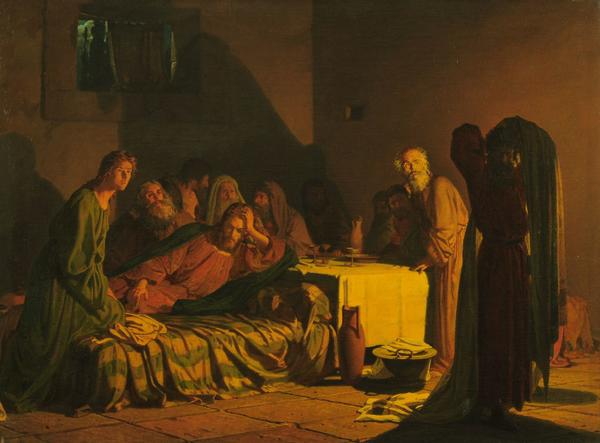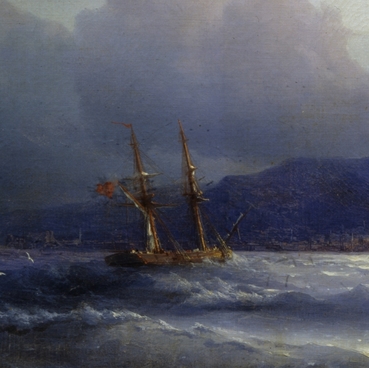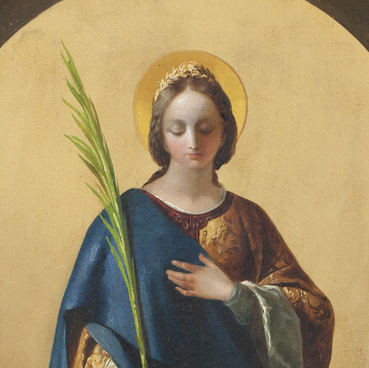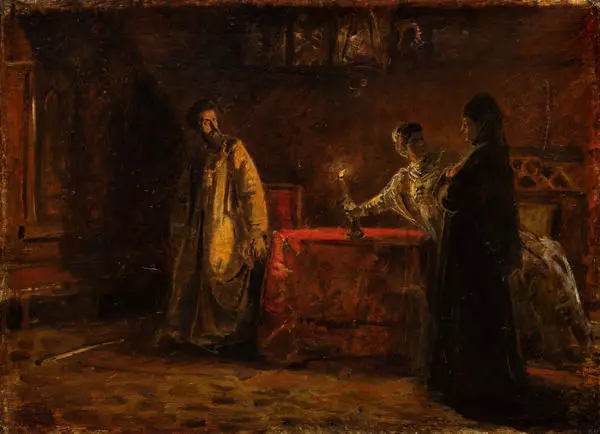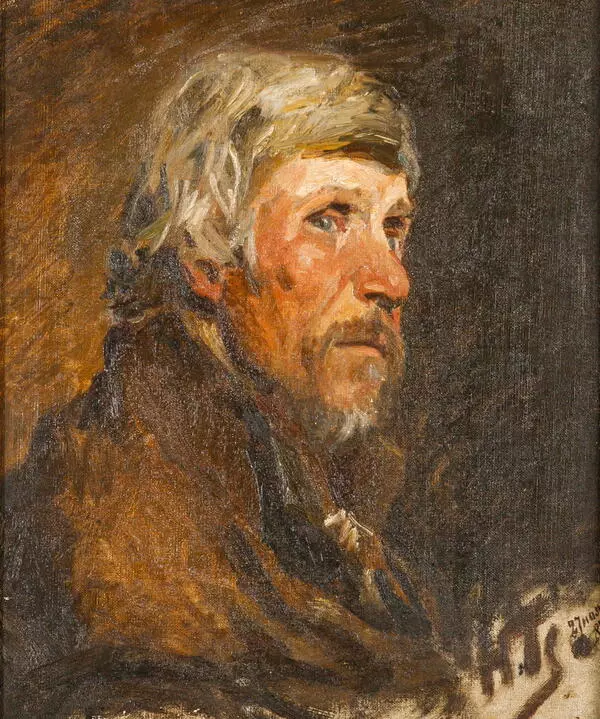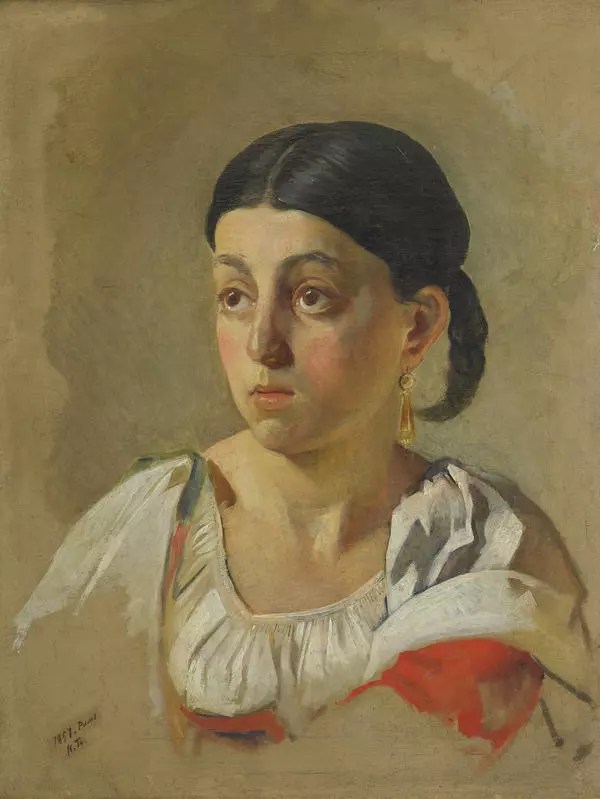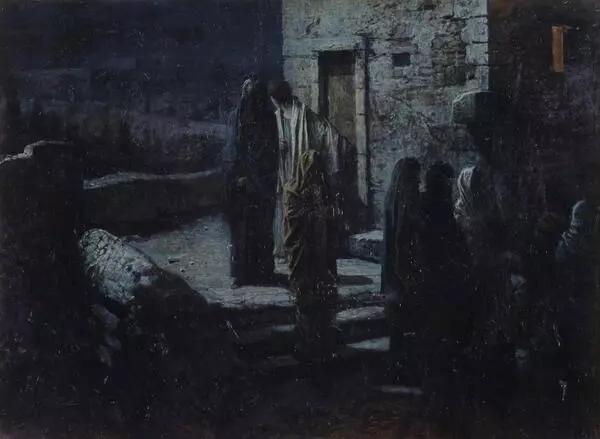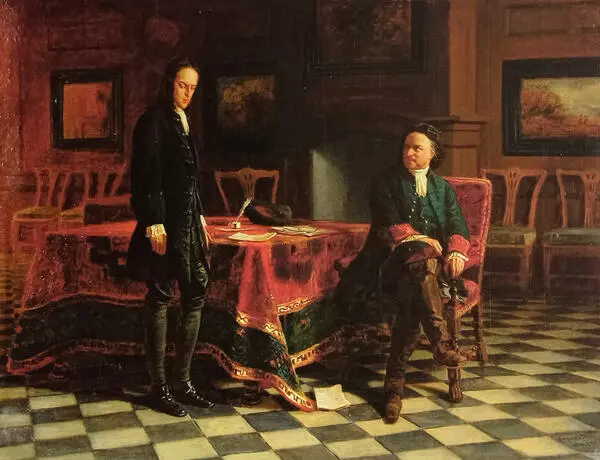This picture earned Nikolay Ghe the rank of a professor bypassing the rank of an academician. He worked at it for two years and in 1863 presented it to the public at the exhibition being held at the Imperial Arts Academy. The Last Supper aroused many comments and discussions. ‘One could say the impression from The Last Supper in St. Petersburg was like a thunderbolt’, - critic Vladimir Stasov wrote. Emperor Alexander II ordered that the picture be bought for the Academy Museum.
According to the Gospel legend, Jesus has a secret meeting with his disciples over supper during which he tells them – ‘one of you will betray me’. The theme of Judas’ moral choice, the theme of betrayal attracted many artists and each and every of them treated it their own way. In Nikolay Ghe’s perception, the evangelical characters are real people with their complex world of feelings and emotions. This perception is helped by a truly realistic setting of the room depicted by the artist.
In Ghe’s interpretation, Judas does not secretly betray Christ for thirty pieces of silver - he openly breaks away from what he cannot agree with. “Ghe interpreted Judas” betrayal not as driven by ignoble greediness but as a sad outcome of disagreements between the creator of a new teaching and his disciple who was not able to renounce ancient Judaism’, - art historian Andrey Somov wrote. It is not so much about betrayal but about a clash of world outlooks, an ideological chasm.
According to the Gospel legend, Jesus has a secret meeting with his disciples over supper during which he tells them – ‘one of you will betray me’. The theme of Judas’ moral choice, the theme of betrayal attracted many artists and each and every of them treated it their own way. In Nikolay Ghe’s perception, the evangelical characters are real people with their complex world of feelings and emotions. This perception is helped by a truly realistic setting of the room depicted by the artist.
In Ghe’s interpretation, Judas does not secretly betray Christ for thirty pieces of silver - he openly breaks away from what he cannot agree with. “Ghe interpreted Judas” betrayal not as driven by ignoble greediness but as a sad outcome of disagreements between the creator of a new teaching and his disciple who was not able to renounce ancient Judaism’, - art historian Andrey Somov wrote. It is not so much about betrayal but about a clash of world outlooks, an ideological chasm.
The small room is in darkness, only the beam of light from the burning lamp seems to be dividing the picture into two parts: here – friends, people of like minds, there – a traitor. Judas’ figure is put to the very edge of the picture, it is enveloped in darkness, his face is not seen. The disciples are shocked by the betrayal - their unbelieving and resentful looks are directed at Judas. Apostle Peter is angry, young John is confused. “Only Christ understands what is going on deep in the traitor”s heart. The Saviour”s lying figure conveys his profound grief that … he is not understood even by his disciples, that some of them are hostile and abandoning him, that one of them is about to renounce him, and that all of them will run away. But he is ready to drink his cup and, although he is able to, does not want to stop the betrayal.” (A. Somov). Author M.Ye. Saltykov-Schedrin agrees with the critic: “It is that beautiful grief enlightened with awareness beyond which all the greatness of what is about to happen opens up”.
Ghe painted Apostle John’s head from his wife, Peter - from himself, and Christ resembles Alexander Herzen who the artist idolised. Later, the artist turns to the subject of Judas once again in the picture entitled ‘Conscience. Judas’. ‘They are used to seeing a traitor in Judas. As for me, I wanted to see a man in him, - Ghe wrote. – He is a misguided man, he is not mean but deeply unhappy as are unhappy millions of those who lose their bearings for a minute and do a lot of evil things, and then either suffer their whole life from what they did, or take their life as Judas did’.

